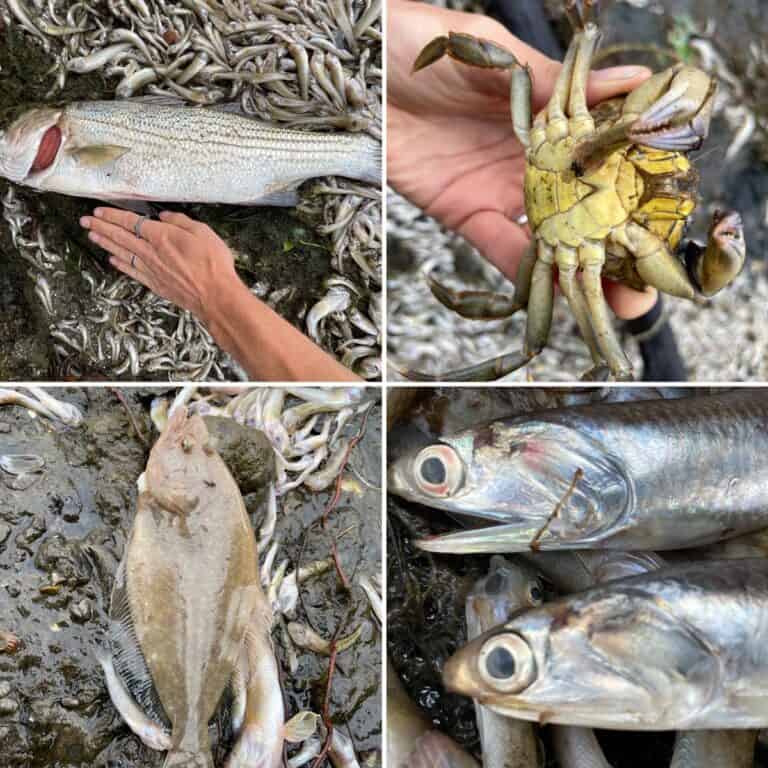Photo: Shifting tides Lake Merritt in downtown Oakland in cleaner times, above left, and after a devastating algal bloom brought fish-killing red tide to the lake in the summer of 2022. Mike D via Flickr and Damon Tighe
Private citizens were first on the scene to document a massive die-off in Oakland’s Lake Merritt. Their contributions were enabled by the crowd-source observation tool iNaturalist.
It was the morning of August 28, 2022 and Lake Merritt’s red tide outbreak had made it a graveyard. The shore sediments were covered with silver dashes of goby fish and tiny dead sea life covered the edges of the Oakland estuary. Sturgeon and a large bat ray drifted lifeless to the surface; when living they tended to brood unseen underneath the quiet ecosystem. When the water was still, you might have mistaken Lake Merritt for an amber incarnation of its former self, capturing thousands of fish suspended in water, a tessellation of white-eyed creatures, blankly staring in bewilderment.
Within a day, the mild fishy smell had grown into a pungent foul odor. Navigating the lake, Damon Tighe, a self-described citizen scientist, was shocked at the unfamiliar and alarming sights: lifeless clams, their shells wide open as if to surrender their vitality; carcasses of countless aquatic animals embedded in the mud; in the water, schools of smelts and gobies frantically swimming towards the surface seeking oxygen as the bottom of the lake grew increasingly hypoxic.
Crowd-sourced observations document an unfolding crisis
The magnitude of this massive die-off led Tighe to launch a campaign to crowd-source efforts to document the loss of biodiversity. His key tool was iNaturalist — an online platform that aggregates users’ pictures of flora and fauna and the observed location.
What Tighe initially thought was a localized disaster had, in fact, permeated the entire San Francisco Bay Area estuaries. “By the time I woke up in the morning, there [were] already like 100 observations in there. And I was like, ‘Oh, crap, this is way bigger,’” he said.
The work of citizen scientists like Tighe and his new network is increasingly intertwined with the work of research scientists at public agencies and research institutions like the United States Geological Survey (USGS), San Francisco Estuary Institute (SFEI) and San Francisco Baykeeper. Researchers from these groups are analyzing data from Tighe’s campaign and their own formal observations to guess at possible causes for the die-off.
“By the time I woke up in the morning, there [were] already like 100 observations in there. And I was like, ‘Oh, crap, this is way bigger.’”
Damon Tighe, citizen scientist
Online citizen-science communities helped researchers get a more complete picture of the local ecology under crisis, but their role might be enhanced as […]
Full article: When red tide smothered an urban lake, citizen scientists sounded the alarm

